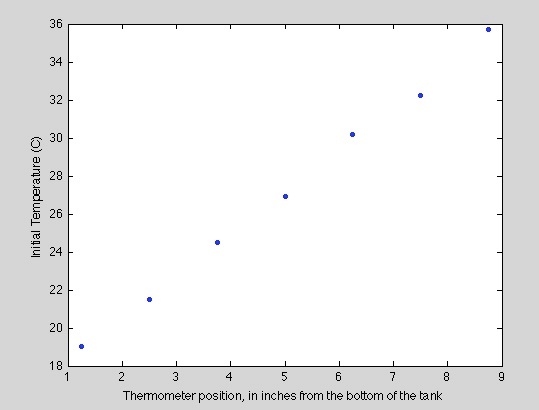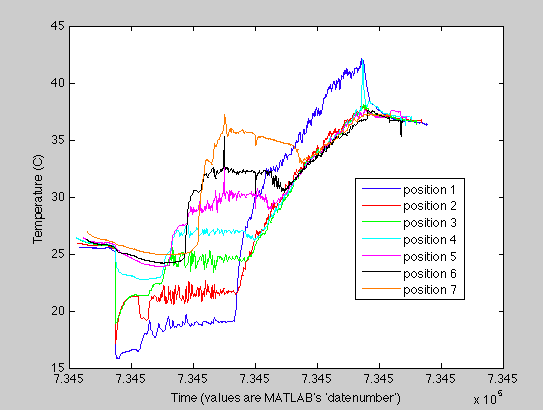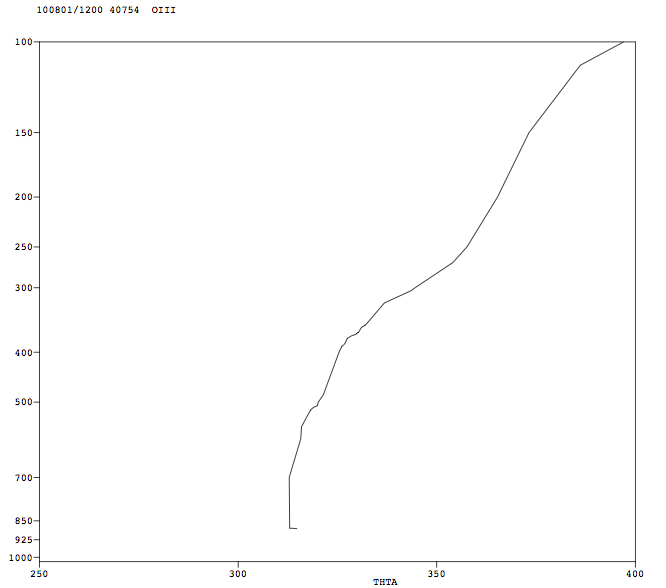There were two things I wanted to highlight from the lab I did on Convection. First I wanted to comment on the success in setting up a linear temperature stratification and then talk about super-adiabatic behavior near the heat source in both the tank experiment and in the atmosphere.
I will refrain from describing the set up for this experiment because it is the same linear stratification experiment described on the Weather in a Tank website. Seven temperature probes were placed at intervals of 1 and 1/4 inches and labeled position 1 through 7, where position 1 was the closest to the bottom of the tank and 7 the furthest away.
Achieving a linear temperature stratification was a little complicated. First the coldest layer of water was added to the tank, which was about 19 C, and then a barge made of sponges held together by a metal frame was placed on the surface of the water. When the next layer of water was added, it was poured onto the barge that slowly released the water into the tank, reducing the amount of mixing between layers. Each layer of water was of roughly equal volume and about 3 C warmer than the previous layer.This process was continued until all of the temperature probes were submerged.
I have to admit, I was skeptical that this was going to work well at all. But when I plotted the average temperature recorded by each thermometer between the time the water was added and the convecting layer reached it against its height (shown in the figure) I was amazed. The initial stratification of the water was remarkably linear. So while the method used to produce a linear stratification may seem crude, it was actually very effective.
Links
[]


